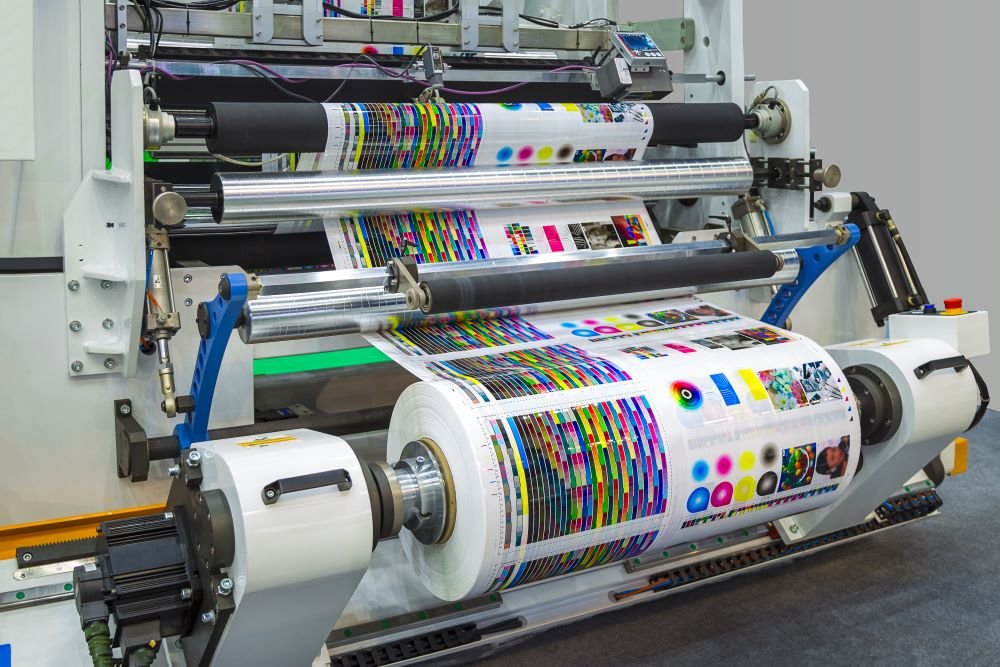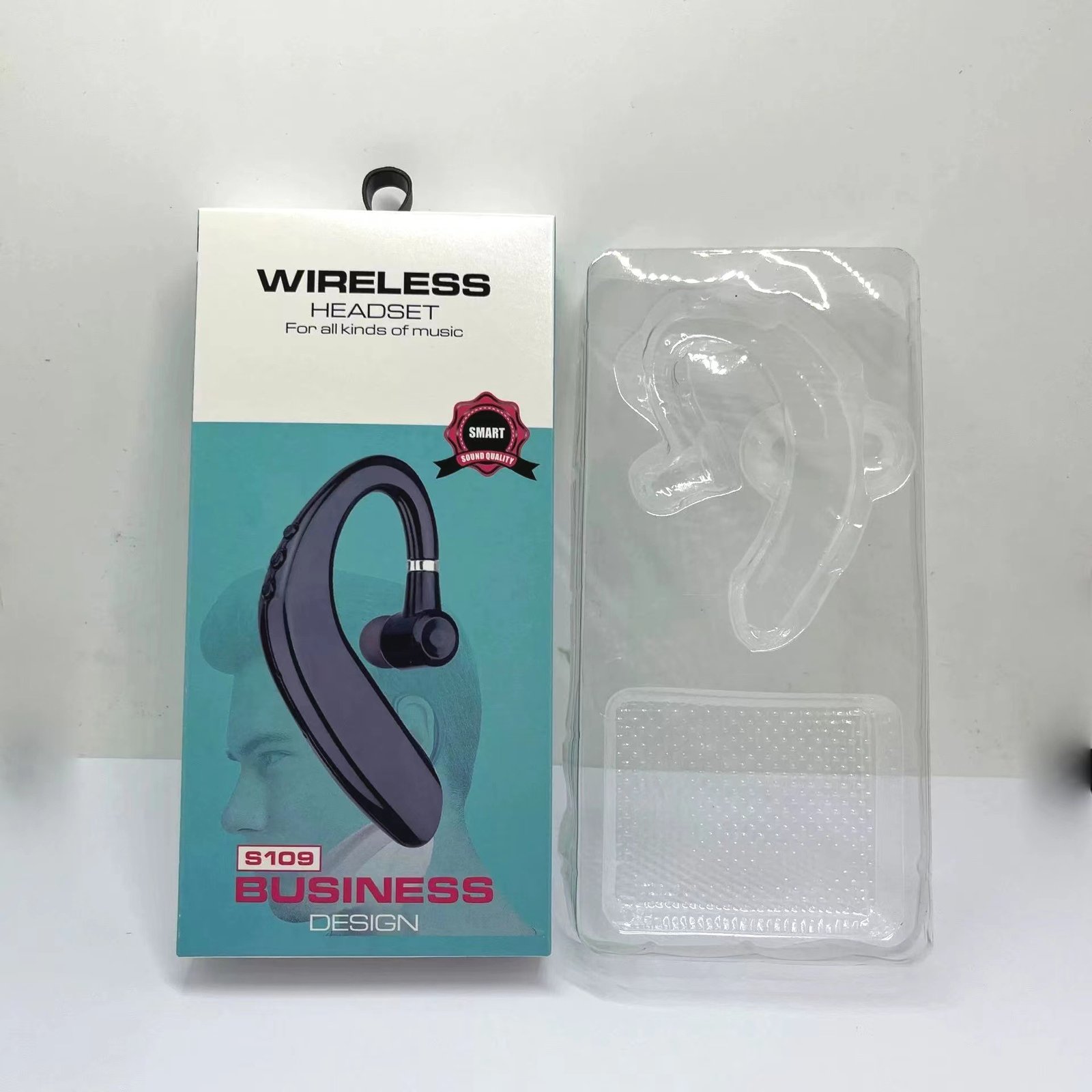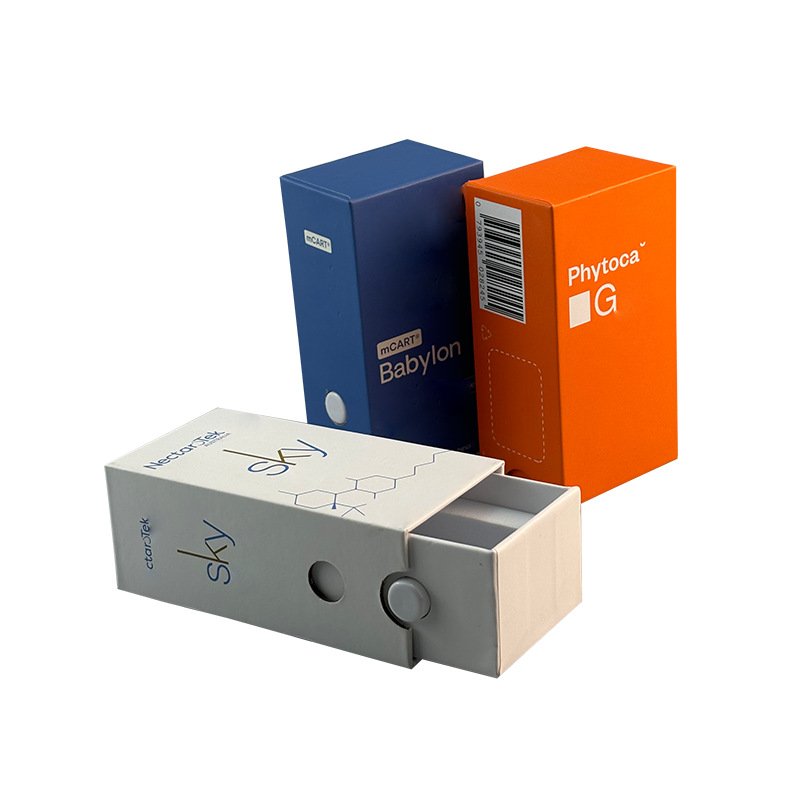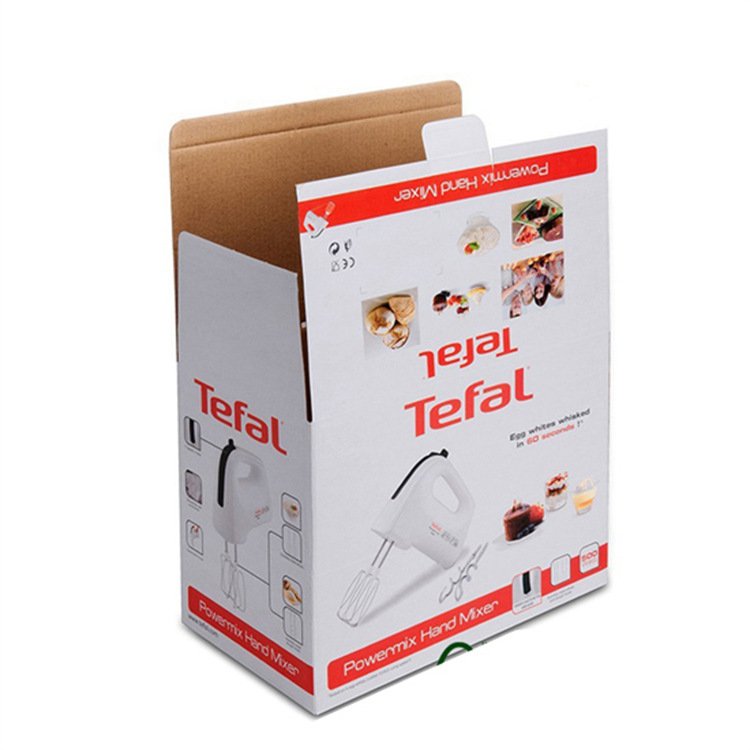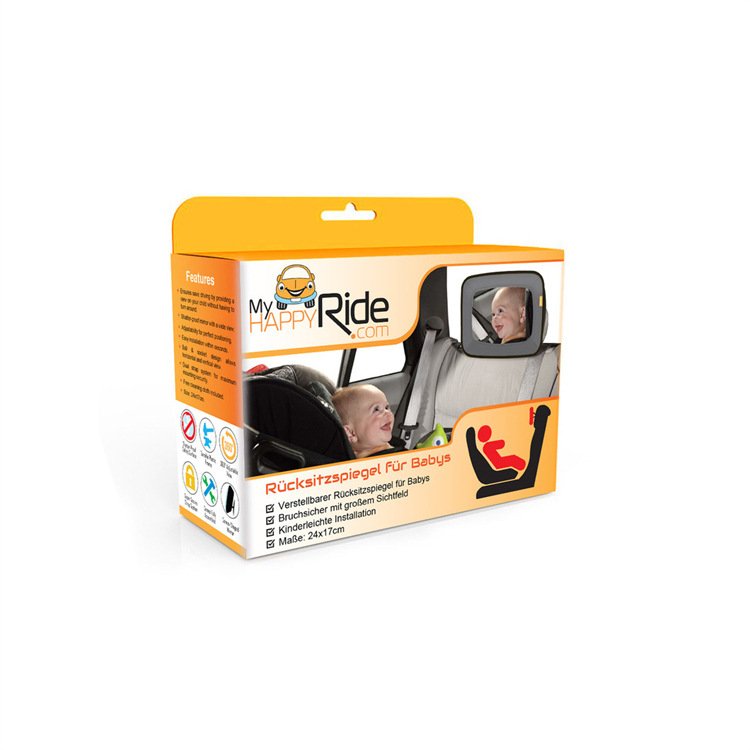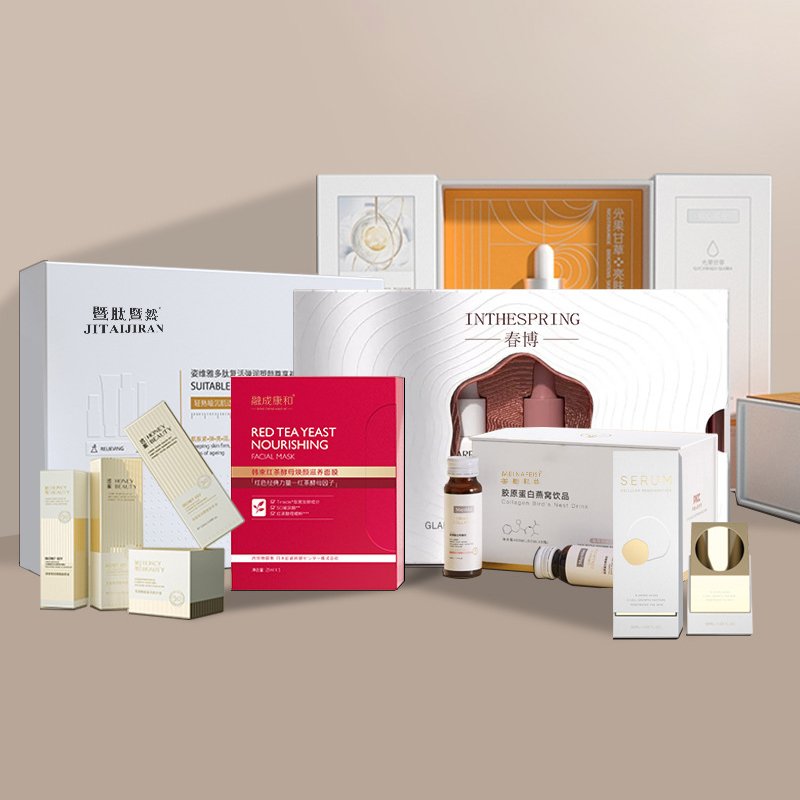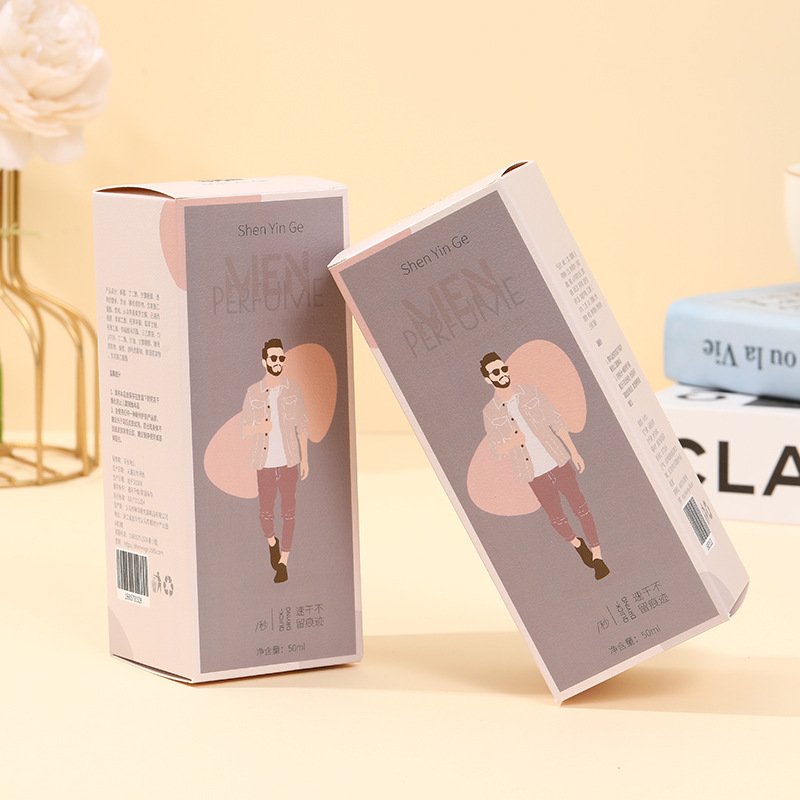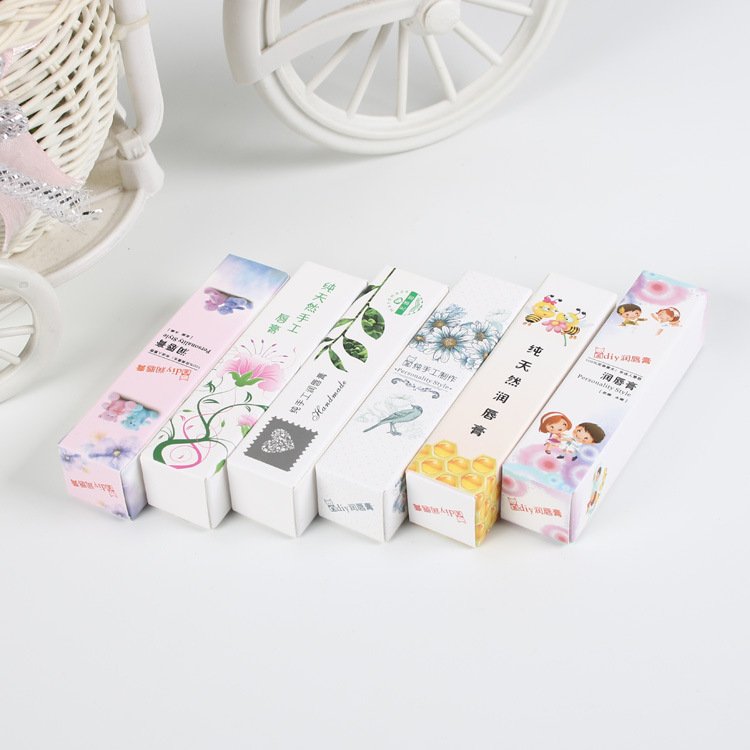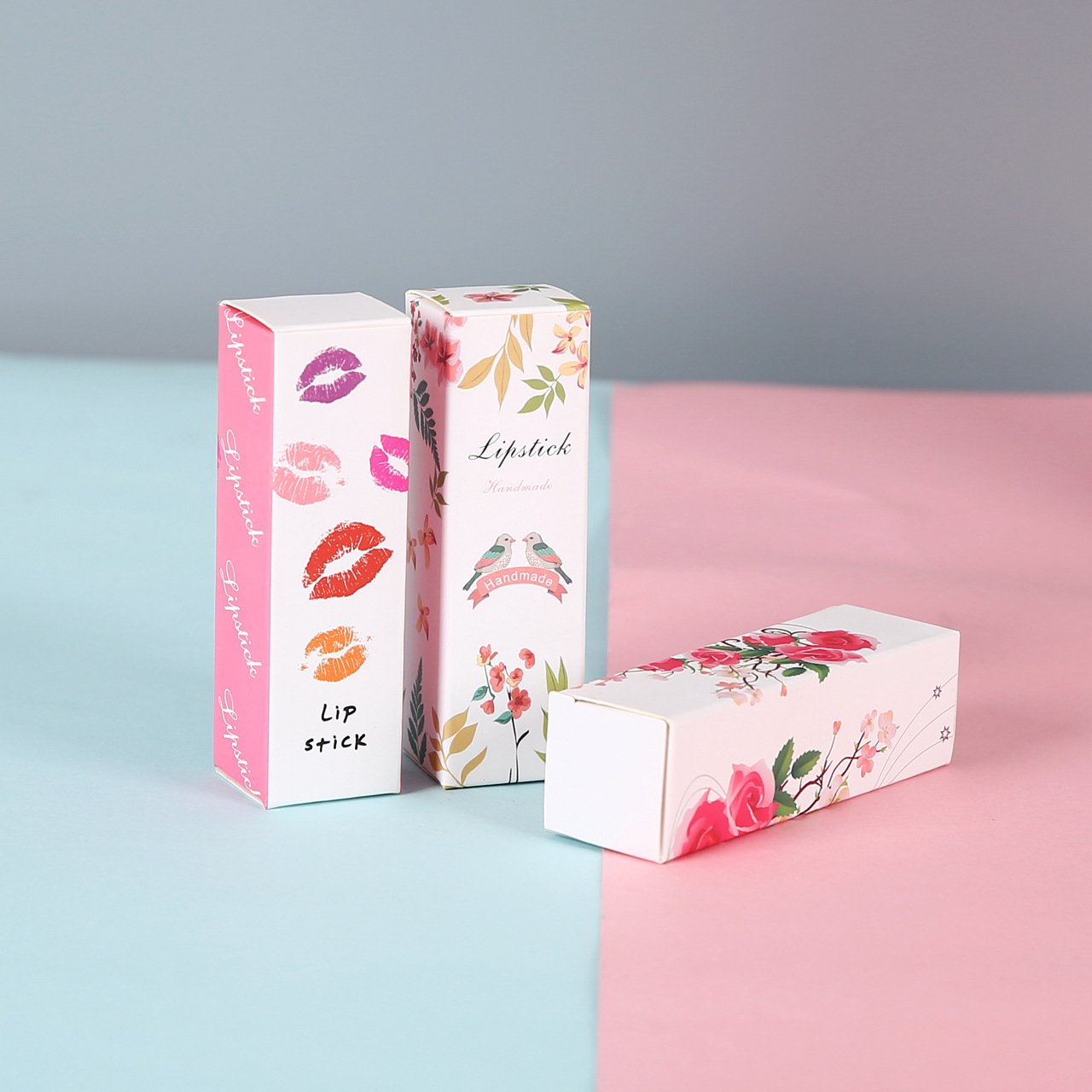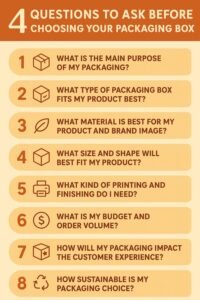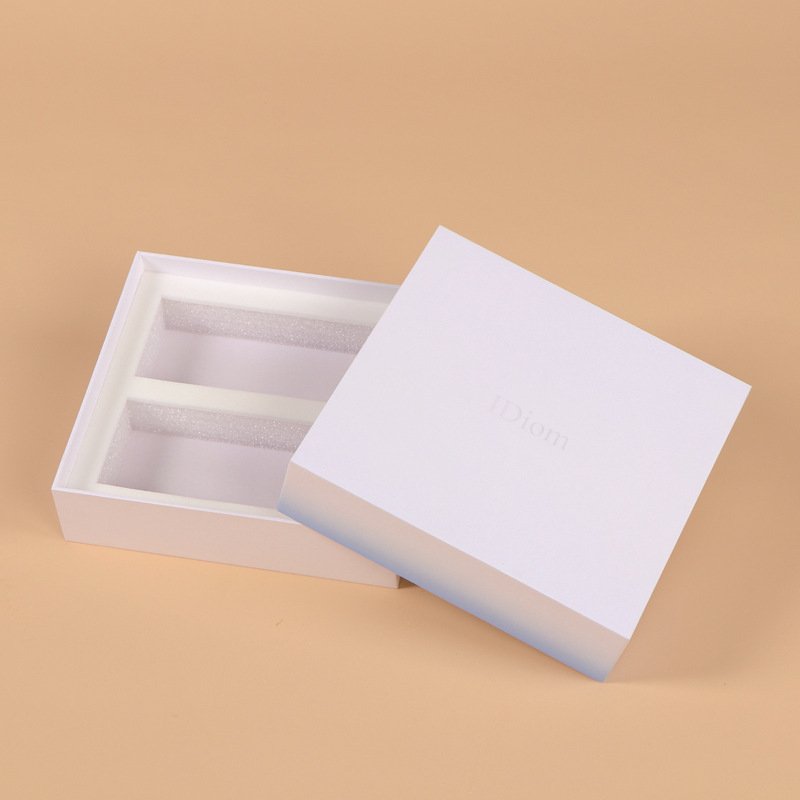As a paper box packaging manufacturer with over a decade of experience in custom packaging solutions, you already know that printing is one of the key levers that determines how packaging looks, performs, and influences customer perception. Among the many printing technologies, flexographic printing (often shortened to “flexo”) is a major workhorse in packaging — especially for large runs, for flexible or corrugated materials, and for packaging that needs durability, speed, and cost efficiency. This blog will explain what flexographic printing is, how it works, its strengths & limitations, how it compares to other printing methods, when to use it vs when not to, and practical tips to get the best results.
1. What Is Flexographic Printing?
Flexographic printing is a form of relief printing in which a flexible relief plate (usually made of photopolymer or rubber) transfers ink onto a substrate. Because the plate is flexible, it can conform somewhat to slightly uneven surfaces, enabling printing on a wide range of materials. The flexo process is highly used for packaging: cartons, corrugated boxes, flexible packaging, labels, and so on.
Key characteristics of flexo:
Uses relief plates: raised image areas carry ink; non-image areas are recessed.
The ink transfer is via an anilox roller (a textured roller that meters ink) → plate → substrate.
Inks used can be water-based, UV-curable, solvent-based, or other formulations.
Fast drying or curing is usually part of the process (especially with UV or certain coatings) to allow high speed and to prevent smudging.
Flexo has evolved a lot: modern flexo presses have better registration, better plate technology, improved anilox rollers, better color management etc. These improvements have narrowed the quality gap between flexo and some high-end offset or digital printing, especially for packaging.
2. The Flexographic Printing Process & Key Components
Understanding the process helps clients design packaging that takes advantage of flexo’s strengths and avoids its pitfalls.
Here are the major steps / components in a typical flexographic printing workflow for packaging boxes:
| Stage | What Happens | Key Equipment / Components |
|---|---|---|
| Artwork & Design | Designers prepare packaging artwork, layouts, color separations. If multiple colors or spot colors are used, each color needs its own image for plate making. Designs need to account for substrate, finishing, folds, edges, etc. | Graphic design software; color profiles; proofing; dielines and trimming guides. |
| Plate Making | Relief plates are produced (usually photopolymer). Originals (artwork) are transferred to plates via exposure or laser engraving. Plates are “flexible” and configured to image and non-image areas. | Plate exposure or engraving equipment; material for plates; lamination, cleaning, finishing of plates. |
| Ink / Anilox Roller Setup | Anilox roller (which delivers a controlled thin film of ink) is prepared; ink type is selected (water-based, UV, solvent etc.); ink viscosity, metering, drying or curing system set up. | Anilox rollers; ink supply systems; ink viscosity control; drying / curing station. |
| Substrate / Material Feeding | Material (paperboard, corrugated, flexible film etc.) is fed through the press. It must be compatible with the ink, handle holding, drying etc. | Substrate feeding mechanism (web roll or sheet fed or roll-to-roll), tension control, drying/curing units. |
| Printing / Impression | The substrate passes through the printing station(s): the anilox roller transfers ink to the plate; plate transfers ink to substrate. For multiple colors, substrates pass through sequential color stations. | Flexo press stations; impression cylinders; registration mechanisms for color alignment; drying or curing after each color or after final color. |
| Finishing in Press or Post Print | May include varnishing, lamination, die-cutting, embossing, foil stamping etc., either inline (in the same press run) or offline. Some flexo presses are modular or have inline finishing capabilities. | Inline finishing modules; varnish / UV / lamination units; die-cutters; embossing plates; sometimes foil cold stamping attachments. |
Key components to manage well include:
Plate quality & life: Plates need good resolution, clean relief, low defects; they degrade over time.
Anilox roller selection: cell volume, cell geometry, wear / cleaning etc. These affect ink transfer, color uniformity.
Ink type & drying/curing system: must match substrate and production speed.
Registration / alignment controls: critical when multiple colors; small misregistration appears especially in precise graphics or fine lines.
Substrate handling: thickness, texture, surface energy (for adhesion), moisture, curling etc.
3. Advantages of Flexographic Printing for Packaging Boxes
Flexo offers many strengths which make it a go-to in many packaging scenarios. Below are its major advantages, especially in the context of paper box packaging (folding cartons, corrugated cartons, display boxes, etc.).
Substrate Versatility
Flexo can print on a very wide range of materials: uncoated/coated paperboard, corrugated board, kraft board, flexible films, foils, metallic films, plastic films etc. It can handle porous and non-porous substrates.
High Speed & Large Volume Output
Flexo presses (especially web-fed or wide-web machines) are capable of very high speed production, making them efficient for large volumes.
Cost Efficiency for High Volume Runs
Although plate making is an upfront cost, once the job is set up, the cost per unit becomes much lower with large volumes. This spreads the fixed setup cost over many units.
Durability of Plates & Ink Performance
Flexo plates (especially high quality photopolymer) can last for many impressions when properly maintained. Also inks used (UV, water-based) can provide good durability, resistance to scuffing, moisture, etc., depending on substrate.
Capability for Inline / Multifunctional Finishing
Many modern flexo presses include inline finishing (varnishing, laminating, die-cutting etc.), reducing handling, reducing extra time, lowering cost.
Variety of Ink Types & Environmental Options
Flexo can use water-based, solvent-based, or UV-curable inks. There are more eco-friendly ink options now; lower VOC versions; faster drying, etc.
Good for Bold Graphics / Solids / Repetitive Patterns
Because flexo does well with large solids, bold color branding, repeating designs (common in packaging graphics, corrugated, etc.), it’s often a strong choice when these are primary needs.
4. Disadvantages / Trade-Offs of Flexographic Printing
Flexo is not perfect. There are trade-offs and limitations. For many packaging jobs, these need to be understood so that expectations, design, cost, and processes are optimized.
High Upfront Setup Cost / Plate Costs
Creating flexible relief plates (one per color) costs money. For designs requiring many colors, or for frequent artwork changes, this becomes expensive. Also time is needed to make the plates.
Limited Finest Detail / Resolution: Fine Halftones & Small Text
Flexo generally has lower resolution for very fine detail / very fine dot gradients compared to offset or high-end digital. Very small type, delicate gradients or photographic images may not reproduce as sharply.
Color Matching Can Be More Difficult
Because of substrate variations, ink behavior (viscosity, drying), plate wear, etc., color consistency across runs or across multiple orders can vary. Especially for brand-critical colors, matches may need more calibration.
Longer Setup & Changeover Time Compared to Some Methods
While printing itself is fast for large runs, setting up the press (mounting plates, calibration, registration) takes time. Also changing artwork, colors, or substrate type leads to downtime.
Plate Degradation and Maintenance
Plates will wear over time; anilox rollers need cleaning; press conditions (temperature, ink, moisture) impact consistency. Plate lifespan and maintaining print quality require good maintenance.
Less Ideal for Very Short Runs or Highly Custom / Variable Designs
If you have very small quantity orders, or designs that change every box, the overhead of plates and setup may make flexo less cost-efficient than digital or hybrid methods.
Environmental / Ink / VOC Considerations
Some inks (especially older solvent-based ones) or cleaning agents generate VOCs; waste from press startup, plate cleaning, substrate waste etc. Also energy costs for drying / curing. But many modern flexo systems mitigate these drawbacks.
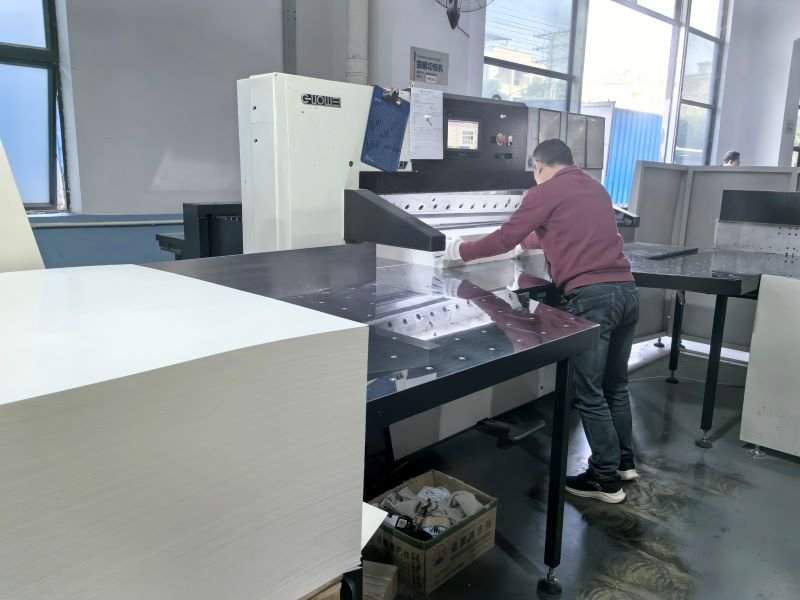
5. Flexo vs Other Printing Methods (Offset, Digital, Gravure)
To help clients understand when to pick flexo vs something else, here’s a comparison of flexo with offset, digital, gravure etc., along key dimensions.
| Comparison Dimension | Flexographic Printing | Offset Printing | Digital Printing | Gravure Printing |
|---|---|---|---|---|
| Setup Cost / Initial Investment | Moderate to high (plates per color, press calibration) | High (plates, setup etc.) | Low (digital file, less tooling) | Very high (engraved cylinders etc.) |
| Cost per Unit for Large Runs | Low for large volume after setup | Low for large high-quality runs | Higher per unit for large volume (unless runs are variable / specialized) | Low for very large continuous runs (especially flexible packaging) |
| Best for Small Runs / Variable Data | Less ideal (plate cost, setup) | Less ideal for very small runs or frequent changes | Excellent flexibility for small runs, personalization, fast turnaround | Less flexible; high tooling; best when volumes large and designs stable |
| Substrate Flexibility | Very good; films, boards, corrugated, etc. | Very good for paperboard, rigid boards; less good on flexible films without modifications | Dependent on machine; many digital presses limited in substrate thickness or variety | Excellent for long runs of flexible packaging or film where gravure is strong |
| Color Fidelity & Fine Detail | Good, especially for bold graphics and solids; may struggle with ultra fine detail or dot range | Excellent for fine detail, smooth gradients, photographic quality | Has improved; may have limitations in solid large color coverage or spot color matching | Excellent, especially for continuous tones, fine halftones; but linewidth and dot gain need management |
| Turnaround Time | Medium – setup time, plate making, etc. but high speed for run once set | Longer because of plate setup, proofs etc. | Fastest for small batches; minimal tooling needed | Longer for cylinder engraving etc.; but once set, long continuous runs are efficient |
| Finishing Abilities | Strong inline finishing is possible; coatings, varnishes, laminations etc. | Very strong finishing; premium finishes often associated with offset | Finishing often done offline; digital print may have limitations to certain finishes | Excellent, especially with film or flexible packaging; capable of complex coatings etc. |
| Sustainability | Can be good with water-based or UV inks; long plate life; substrate versatility; modern machines reduce waste | Similar, though offset may use more paper proofs etc. | Potentially lower waste; less setup waste; though ink types and substrate use matter | Dependent; gravure often uses more energy and tools; but waste per unit low when scale large |
6. When to Choose Flexo — Use-Case Scenarios & Decision Criteria
As a manufacturer advising brands, these are the key criteria or situations when flexo is well suited — and when perhaps another printing method might make more sense.
Ideal Scenarios for Flexo
High Volume Runs: Folding cartons, corrugated boxes, or packaging for FMCG (fast moving consumer goods) where thousands or tens/hundreds of thousands of units are needed.
Standard / Stable Designs: When the artwork doesn’t change often: consistent branding, consistent color usage across SKUs, low variations.
Materials with Challenging Substrates: Corrugated board, kraft board, flexible film, foils etc., where flexo’s flexibility and ability to handle rough or non-porous surfaces is an advantage.
Need for Inline / Combined Finishing: Packaging that requires varnishing, laminating, die-cutting etc., where press with inline finishing saves time and reduces handling.
Solid Colors, Bold Graphics, Repeats, Barcodes & Legible Text: Branding where bold solids or logo color consistency matter more than ultra-fine photographic detail.
When Flexo Might Not Be Best
Small / Short Runs: If order volumes are low, the plate & setup costs may dominate, so digital or offset might be cheaper.
Frequent Design Changes / Variable Data: If client changes artwork frequently, wants personalization, seasonal themes etc., digital or hybrid methods may be more flexible.
Highly Detailed Photographic Graphics: Complex photo images, ultra fine gradients, very small tonal variations might suffer in flexo if plate resolution or press calibration aren’t top-tier.
Critical Color Matching: If brand has strict Pantone / spot color requirements and exact matching across batches, some flexo presses may struggle unless optimized.
Thin, Delicate, or Highly Textured Substrates: Very thin films, delicate foils, extremely textured or non-uniform surfaces may cause issues. Also substrate stretch, curl, or sheen may impact print.
Decision Criteria Checklist
You can use a checklist when discussing jobs with clients:
Expected quantity
How often artwork/design will change
Substrate type(s) and thickness / texture
Required finish / varnish / lamination indicators
Brand color requirements (spot colors, color consistency)
Lead time constraints
Budget constraints per unit & total budget
Sustainability goals (ink types, substrate recycling etc.)
7. Technical & Material Considerations / Best Practices
When using flexo printing for packaging boxes, attention to technical details greatly improves results, reduces waste, and enhances brand satisfaction. Here are best practices and critical considerations.
Artwork & Design for Flexo
Use artwork prepared for flexo: adjust for dot gain, select appropriate resolution. Fine halftones (very light shades) may need special treatment or may not render as cleanly.
Limit extremely fine lines or tiny text in very light areas; ensure they are still legible after plate making and printing.
Use dielines carefully; consider the box folding, creases, edges: ink coverage should avoid folding lines where possible (to prevent cracking).
Consider the bleed and safe area; because of registration shifts and substrate movement, leave margins.
Plate & Anilox Roll Management
Choose high-quality relief plates (photopolymer or better) with appropriate hardness for your substrate; ensure plates are clean, well mounted, and stored properly.
Select anilox rollers with correct cell volume and geometry; they must be cleaned regularly and maintained.
Monitor plate wear; replace plates when image degradation shows (blurriness, loss of detail).
Ink, Drying / Curing & Finishing
Use appropriate ink type: water-based, solvent, UV depending on substrate, environmental regulations, durability needs.
Ensure drying / curing system is adequate: UV curing, IR drying, hot air, etc., especially when printing on non-absorbent surfaces. Inadequate drying causes smearing, sticking, or blocking in finishing.
Plan finishing: varnish, lamination, die-cutting etc. Be sure these operations are compatible with ink adhesion and substrate behavior. Finishes can be inline or offline.
Substrate & Material Handling
Choose substrate that matches print (coated / uncoated, smooth / textured): smoother surfaces give cleaner print; rough or uneven surfaces may absorb ink unevenly or show substrate texture through ink.
Manage substrate moisture, curl, deformation. Environmental conditions (humidity, temperature) in press area matter.
Thickness and stiffness: rigid or thick board must be fed carefully; press must handle thickness without misregistration or jamming.
Process Control & Quality Assurance
Establish color profile / calibration routines; use proofing to manage client expectations.
Use test runs / press checks early in each job; inspect for registration, ink density, color uniformity, dot integrity.
Maintain equipment: keep plates clean; clean anilox rollers; maintain impression cylinders; ensure press environment is stable.
Waste Minimization & Cost Optimisation
Nesting of box artwork to minimize substrate waste.
Efficient imposition of multiple boxes on larger sheets or webs.
Reduce over-inking; balance ink thickness vs drying capacity and finish.
Reuse or recycle substrate offcuts where possible.
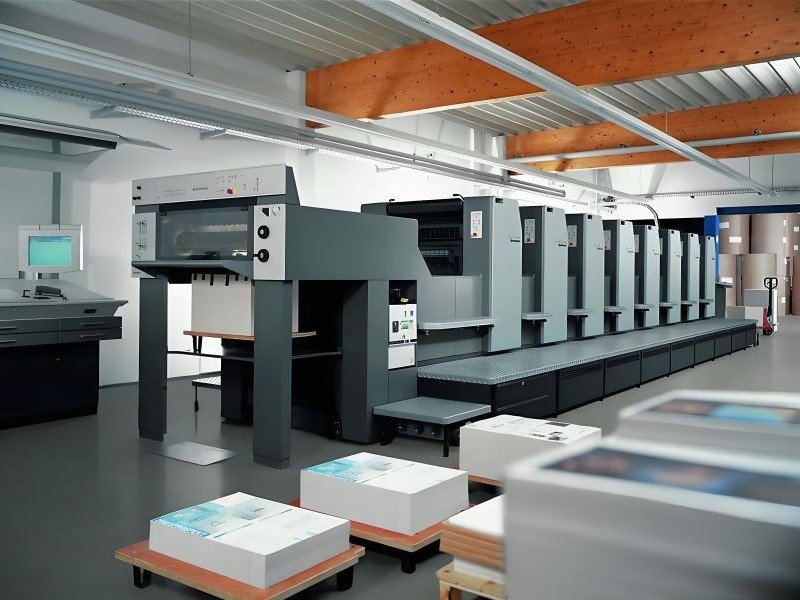
8. Substrates, Inks & Finishes in Flexo for Paper Box Packaging
Now let’s dig deeper into specific materials, ink types, and finishing options commonly used in flexo when making packaging boxes.
Common Substrates
Folding carton board (coated / uncoated)
Coated boards (gloss, satin, matte)
Kraft / natural / recycled boards
Corrugated board (printed either direct or via liner)
Laminated board (board + film or foil)
Flexible films (occasionally used for inline finishing or hybrid packaging) — though for rigid boxes, mostly board/corrugated.
Ink Types
Water-based inks: Often used on paperboard and board substrates; more environmentally friendly; slower drying or require higher heat or air drying; color may be somewhat softer.
Solvent-based inks: Faster drying; better adhesion to certain plastic / film substrates; but concerns over VOCs and environmental / regulatory compliance.
UV-curable inks: Cure under UV light; fast, good durability, can handle non-porous substrates better; high gloss potential.
Finishing / Special Effects
Varnishing (gloss / matte varnish), overprint varnish
Laminations or protective coatings (especially to protect printed surface from rubbing, moisture, scuffing)
Spot treatments—varnish, gloss/matte contrasts
Metallic effects / foil stamping (though flexo may have limitations vs other methods for complex metallic effects)
Die-cutting, embossing or debossing (sometimes inline or post-print)
Matching Finish to Branding Needs
Brands seeking premium look will want sharper inks, more contrast, higher gloss, clean finish; possibly softer coatings or finishes that enhance texture.
Brands with eco / natural positioning may prefer kraft board, less coating, water-based ink, matte or natural finishes.
9. Quality Control, Prototyping & Cost Optimization
As with any large production method, getting flexo right involves proactive quality control, prototyping, and cost optimization. Here are how you (manufacturer) can deliver added value and ensure success.
Prototyping & Sample Runs
For new packaging designs, always run physical samples: printed and finished, folded / assembled as final packaging. Check for color, registration, finish, folding, joints etc.
Test under transit / packing / handling conditions: drop tests, vibration, stacking, moisture.
Color Proofing & Standards
Maintain color standards / brand color references. Use spectral measurement tools if needed.
Calibrate presses; keep temperature, humidity stable; monitor ink viscosity.
Batch Consistency
Especially for reprints, ensure substrate lot is consistent; inks are from same batch or same formulation; plates are in good condition.
Minimize Cost & Waste
Efficient nesting & imposition (arranging box layouts on substrate to use material well).
Standardizing box designs or SKU layouts to reuse plates/press settings.
Reduce changeovers by grouping similar jobs to reduce setup time.
Maintenance & Equipment Efficiency
Keep plates and anilox rollers clean and in good shape.
Monitor press wear, alignment, registration drift.
Ensure drying/curing equipment operates correctly to avoid smudging or ink transfer issues.
10. Case Studies / Examples
These examples illustrate how flexographic printing has been used in real packaging box and related packaging contexts, showing successes and lessons.
Case Study A: Corrugated Shipping Cartons for a Retail Brand
Situation: Large volumes of corrugated outer boxes needing prominent logo, bold brand colors, and readable barcodes. These boxes will endure rough handling.
Flexo Solution: Use flexo direct printing on corrugated linerboard, large solids for branding, minimal color variants (1-2 colors), simple varnish to protect graphics. High-strength corrugated board, good color contrast.
Outcome: Achieved durable branding, low cost per unit (because of large volume), efficient production with minimal waste. Some limitations in fine detail (e.g. very small text) but acceptable for outer shipping box purpose.
Case Study B: Folding Carton for Consumer Goods
Situation: A brand wanted high gloss finish, vibrant full-color imagery, multiple color process, on folding carton board, for retail shelf presence. Also moderate volume.
Flexo Solution: Use modern flexo press with UV inks, good plate resolution, coated board substrate; varnish / gloss lamination; invest in good anilox rollers. Also run proofing and color matching.
Challenges: Upfront cost, ensuring color fidelity; ensuring finish was scratch-resistant; fold lines needed care to avoid cracking in high coverage areas.
Result: Shelf impact strong; client satisfied; cost per unit higher than basic cartons but justified by increased perceived value and retail performance.
Case Study C: Flexible Packaging / Labels / Specialized Substrates
Situation: Products needing small labels, or flexible film pouch packaging; needed fast drying, durability, weather / moisture resistance.
Flexo Solution: Use UV-curable inks; suitable film substrate; fast drying; often inline varnish or lamination. Registration important, color saturation management.
Trade-offs: Higher material costs, need for careful finishing; thin films needed careful handling to avoid creasing or distortion.
11. Strategic Advice for Manufacturers & Brand Clients
Given your experience, here are strategic recommendations for using flexo printing effectively in your packaging box business, and how to talk with clients about when it’s the best choice.
Educate clients about trade-offs: Help clients understand upfront vs unit costs, quality limits, and the importance of design choices that support flexo (e.g. simpler graphics, fewer tiny details, margin for registration errors).
Maintain a portfolio of flexo capabilities: Good plate-making, various substrate compatibilities, different ink types, inline finishing where possible. The more flexible your equipment and skill, the better you can serve diverse client needs.
Invest in equipment and process controls: High-quality plates, well-maintained presses, good anilox rollers, stable environmental control — these make a big difference in output quality and consistency.
Offer prepress / proofing service: Before full run, provide color proofing, sample boxes, mock ups. Minimizes surprises.
Optimize job scheduling / grouping: Combine orders with similar substrates or colors to reduce changeover costs; plan ahead for seasonal runs.
Sustainability as a selling point: Use water-based or UV inks, recyclable or FSC certified board, minimal coatings, less waste; communicate this with clients. Many brands now expect environmental performance.
Monitor emerging tech: Flexo plate technology continues improving (higher resolution, longer life), anilox roller technology improves, ink formulations (lower VOC, faster curing) improve. Also hybrid printing (combining flexo with digital) may allow for flexibility + volume.
Flexographic printing is a powerful method for printing packaging boxes
Flexographic printing is a powerful, versatile and often cost-effective method for printing packaging boxes — particularly when dealing with large runs, varied substrates (corrugated, film, board), strong brand graphics with solids, and when finishing or durability is required. Its flexibility in inks, capability for inline finishing, and compatibility with many materials make it a key tool for packaging manufacturers.
However, flexo has trade-offs: setup cost for plates, limitations on very fine detail, potential color consistency issues, and higher cost for very small or frequently changing designs. It is not always the best option if the order is small, or design is highly detailed / variable, or tightly constrained by time or budget.
Since BM already have strong capabilities in paper box manufacturing, maximizing flexo printing quality and services can be a competitive advantage. By combining good technical practices (plate quality, substrate selection, finishing), strong client education, sustainability, and smart process & cost optimization, we can deliver packaging that looks excellent, protects product well, satisfies branding expectations, and does so with efficiency.
About BM Paper Box Manufacturer
We are a professional paper packaging box customization factory with ten years of industry experience. We focus on providing customers with high-quality customized packaging solutions, covering consumer electronics, medical equipment consumables, cosmetics and other fields, with ingenious design and exquisite technology, to add infinite charm to customers’ products.
As a professional paper packaging box customization factory, our service range is wide, covering consumer electronics, medical equipment consumables, cosmetics and other fields. Whether it is the exquisite gift box of high-end consumer electronics, the professional packaging of medical equipment, or the fashion outer box of cosmetics, we can tailor the most suitable packaging solution according to the needs of customers and the characteristics of the product. Our professional strength has been recognized by many brand customers and become their trusted partner.
Why Choose BM Paper Box Factroy
HIGH END QUALITY:As one of the best customized paper box manufacturer in china, our QC team will ensure every single product you receive are best quality. We have professional quality testing machine.
PRODUCT DESIGN:Our sampling department has complete process of making drawings into reality. We also improve your product design based on our years of working experience.Tell us what you think.
STABLE DELIVERY TIME:As the best gift box manufacturer & supplier,we have sufficient manufacturing capacity, big orders won’t beat us, we can still deliver the order for you in time.
BEST PRICE:We are source factory of paper boxes and the best manufacturer in China, that’s why we can provide high quality bags with best price.
PRECISE MANAGEMENT:Nothing can be achieved if we don’t implement precise management. We are a company with complete management system.
7-24 SERVICE:As the best paper box manufacturer, 24-7 immediate response: We’ll receive your feedback to make us a better supplier.contact us(+86 18925520049)
FAQs About BM Paper Box
We are a Chinese top manufacturer and our factory is located in Dongguan. Welcome to visit our factory!
• We are a professional paper packaging product provider, especially in the gift packaging field. We can produce kinds of paper boxes and paper bags for multi-purpose.
• We provide one-stop services and accept custom designs as your requirements.
•Of course, usually we will provide free samples, and you only need to cover the freight. For custom printed samples, pls send your requirements to us for checking the sample cost.
• It takes about 7 days for sample production.
Yes, we provide free design services, structural design and simple graphic design.
Sure. We can do any packaging with your design. Now we open a ODM packaging which is for small quantity from 100pc to 500pc,but you can still have your own logo.
Depending on the order quantity and production details, it will take about 15 to 20 days.
Always a pre-production sample before mass production; Always final Inspection before shipment
• Size, material, printing details, quantity, shipping destination, etc.
• You can also just tell us your requirements and we will recommend products to you.
• By sea, by air or by express.
• If you have your own freight forwarder in China, it is the ex-factory or FOB price.
•CFR or CIF, etc., if you need us to ship on your behalf.
• DDP and DDU can also be used.
• More choices, we will consider your choices.
• The price is determined by the quantity, material, processing method, size and other factors. In addition, due to our continuous
technological innovation, the prices of some of our products are extremely competitive, please contact us to quote.


